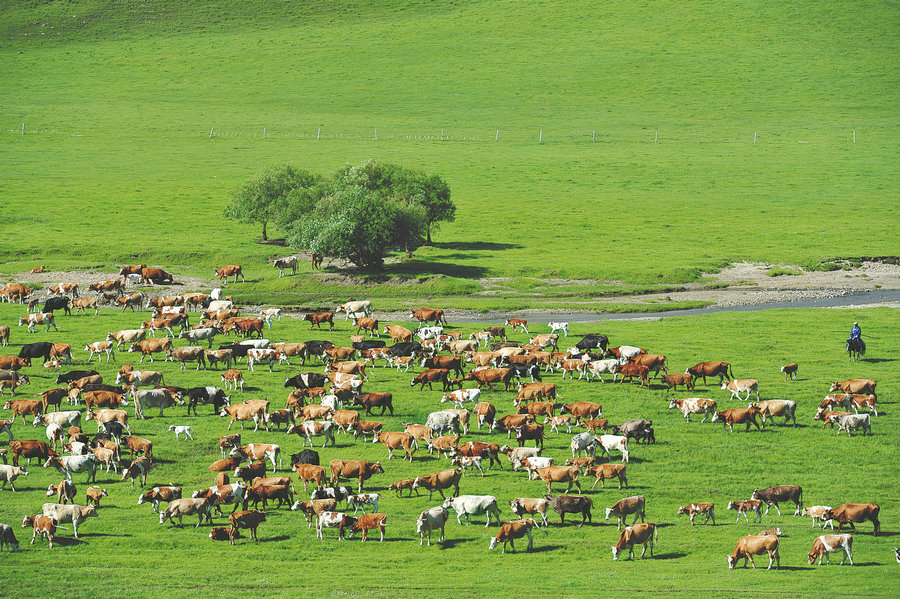

In 1546, the 15th-generation grandson of Genghis Khan's younger brother led his tribe to relocate here, but the nomadic tradition on this land stretches back many more centuries, even further back than the rise of Genghis Khan. Archaeologists have found evidence that people carried out basic production here as far back as the Neolithic Age.
Since Oyunbileg's childhood, summertime journeys have been etched into his memory.
"I first moved around in summer with my parents when I was 7 or 8," Oyunbileg recalls. "It was a really tough journey riding the lele cart (a type of oxcart) for days. It was exhausting, but so much fun."
Throughout history, until around a decade ago, lele carts carried the hopes of locals for robust livestock, which were fed on the flourishing grass. In the past decade, there has been an increase in the use of modern vehicles. A journey now is often shortened from days to hours.
"When we set off with other families, it's sometimes like a group trip, and, driving a van on the road, we don't worry about bad weather anymore," he says. "The yurts we live in are also much better equipped nowadays, with things like solar-powered facilities."
Tools may change, but some key traditions linger.
On May 20, Ar Horqin Grassland Nomadic System in Inner Mongolia was inscribed on the list of Globally Important Agricultural Heritage Systems, or GIAHS, by the Food and Agriculture Organization of the United Nations.
The FAO says on its website that by evolving in the middle of lofty mountains, vast grasslands, densely covered rivers, the traditional nomadic production and lifestyle of the Mongolian ethnic group has been well preserved.
As the organization comments: "The special natural environment also gave birth to the unique Mongolian nomadic culture, which is based on the relation of interdependence among sheep, goats, cattle, horses, camels and other livestock."
Nonetheless, for hardworking herdsmen like Oyunbileg, life is more than idyllic descriptions.
"We are busy all day long," Oyunbileg says. "Milking, cleaning cow dung, feeding ... you name it. But as long as the weather is fine, I don't have much to worry about. Our calves will grow fast this spring, and they will surely sell for a good price."
Oyunbileg's family can earn about 70,000 yuan ($10,445) a year selling livestock.
"It's great to see that our lifestyle is now part of a global heritage," he says. "Hopefully, that can help our produce become a worldwide famous brand."